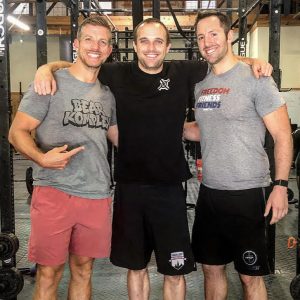When people think of “owning their own business,” they usually either think of doing freelance wedding photography on the weekends, or raising a bunch of money and starting the next Google.
This can be a pretty significant limiting belief, since getting investors is an intimidating, stressful and time-consuming process.
But, what do you do when you need to get your company funded? And what are the trade-offs between different funding models?
I’ve raised money from friends and family in the past to cover the buildout and operating expenses of South Loop Strength & Conditioning when we took on a large lease.
And, my friend John Friel is currently in the process of applying to the well-known start-up accelerator Y Combinator for his company Art in Res.
Check out the full conversation to learn:
- What are the incentives of investors and what are they hoping to gain out of investing in companies – and what are the trade-offs and dangers of pursuing the rapid growth that venture capitalists expect?
- How to think about “storytelling” to investors and why some investors like to hear hard numbers and other like more narrative in their pitches
- What are the differences between nerds, fans and utilitarians – and why do suburban dads who don’t even play guitar know so much about different tones and amps?
Check out the episode at the links below. If you enjoyed the episode, the best way to support the show is to share with your friends, so send them a link.
Listen Here
- iTunes
- Overcast
- Google Play
- mp3
- Or stream here:
- If you’re enjoying the show, why not a leave a review? It makes a difference in terms of other people finding the show.
Check out more from John and Art In Res here:
- Instagram: @johnfriel | @art_in_res
- Website: www.artinres.com
Show Notes:
- [01:21] Going through the Y Combinator application process required “stepping back” and looking at the entire structure of Art in Res – rather than getting caught up in the day-to-day, in-the-weeds aspects of operating the business. It also required understanding how to “storytell” to investors – which seems to require different skillsets for finance people and venture capitalists.
- [12:30] Why play the venture capital game rather than bootstrapping and attempting to create a “lifestyle business?” What will it take for Art in Res to grow to a scale that would justify venture capital investment?
- [24:15] How much money should you actually raise during the fundraising process? There seems to be conflicting advice regarding being frugal – but also raising more money than you think you’ll need. And – the cognitive biases that make it necessary to game the system so that you can signal a constant and impressive upward trajectory.
- [37:31] Thinking about the incentives of venture capitalists and why they want to invest in companies – and going down a rabbit hole to parse out the difference between nerds, fans and utilitarians. And how art collectors, coffee snobs, music gear heads and sports fans all probably follow a similar archetypal structure in terms of their enthusiasm for esoteric knowledge.
- [53:45] How to potentially tap a latent market for art collectors – and understanding the psychology of potential consumers in order to create a marketplace on which commerce actually takes place.





